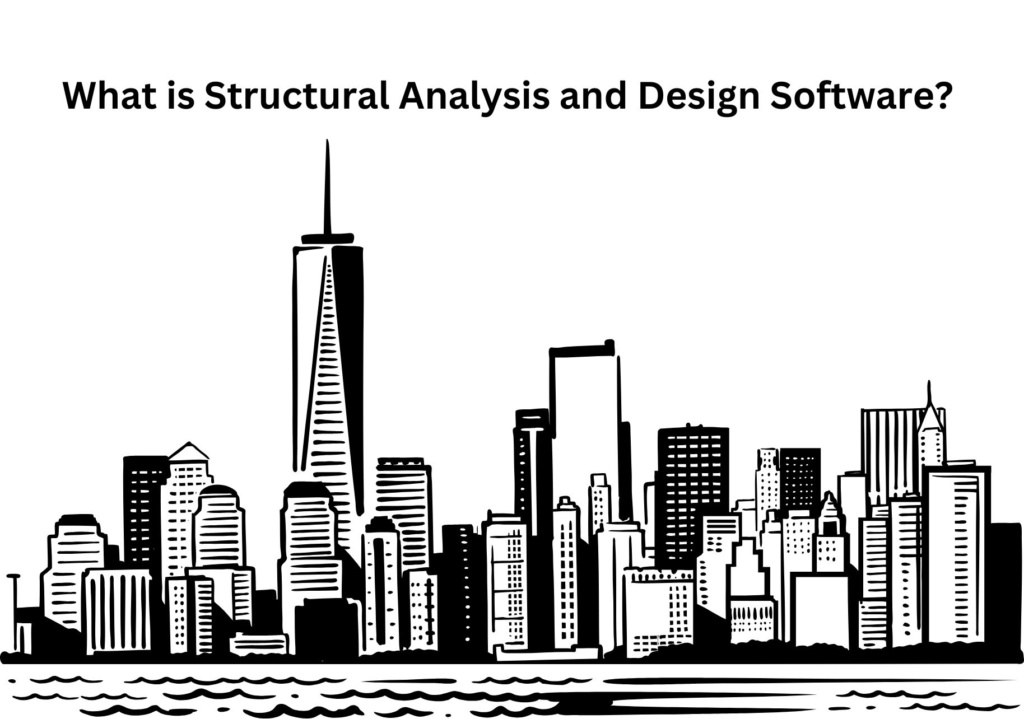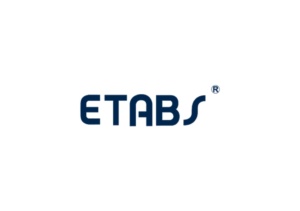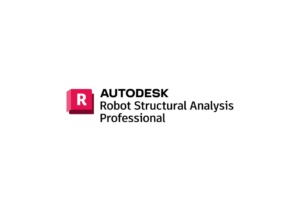Top 10 Structural Analysis and Design Software [2026]

With the ever-expanding growth in the field of engineering, Structural analysis and design softwarehas never been more important. The relevance of Structural engineering software for civil engineers cannot be underestimated as it enables them to develop more effective and safe designs at affordable costs. This guide will walk you through the importance of structural engineering software, its core benefits, and the best tools available for 2026.
What is Structural Analysis and Design Software?

Prior to the construction of a building or a bridge, civil, mechanical, and even aerospace engineers use structural analysis and design software to consider all components required and devise an appropriate model. In essence, these programs play a vital role in simulating the conditions such as loads and stress along with the performance of the structure when built. Simulating these conditions allows them to come up with detailed plans for blueprints that are ready for construction. Such tools implement enhanced accuracy to any type of project through processes such as finite element analysis and code compliance checking – all which are integrated into a singular software.
Importance of Structural Analysis and Design Software in Modern Engineering
The construction and engineering industry thrives on precision, and structural analysis and design software ensures that. Here are its core contributions:
Core Benefits
- Increased accuracy in structural calculations: It diminishes the human factor and guarantees stability for structures.
- Faster project completion with automated functions: It saves time due to built-in features which handle monotonous yet needed activities.
- Achieving international and domestic building code requirements: Effortless design alterations to ensure that compliance with code compliance and regulations are met.
Applications Across Industries
- Civil engineering: It is for designing structures like buildings, bridges, and dams using structural analysis software for civil engineering.
- Mechanical engineering: It is used in the designs of machine frames as well as heavy equipment.
- Aerospace and marine: It is used for aircraft and ships structural analysis.
Why Staying Updated with the Latest Software Matters
In every structural engineering project artificial intelligence is taken into account. If outdated tools are used, work performance will certainly be compromised. Here are the advantages of keeping software updated:
- New functionalities and applications: Improved simulation tools, more advanced 3D modelling, and sustainable features abound in newer software.
- Integrating with new design methods: New goals like sustainable design and new techniques like digital twins are ways to stay in topic.
Key Features to Consider in Structural Software
To make a good selection on structural analysis and design software, the following points must be kept in consideration.
Performance Features
- Load analysis and simulation capabilities:: These features are imperatively important in order to simulate real-world stress situations.
- 3D modeling and visualization tools: : There is a need for elaborate images to interpret structures in pictures.
- Support for complex geometries and materials: This increases the scope of design for diverse projects.
Usability
- Intuitive user interface: This must be designed in a manner that enables easy learning and usage of the software.
- Training and support options. : Availability of manuals and responsive customer support is very important.
- Customization and scalability.: Everything from new tools, workflows, guides and even templates must be made from scratch in order to satisfy the increasing demands of the business.
Interoperability
- Integration with other software : Must be integrated with existing BIM tools or CAD programs like Revit.
- File format compatibility: This includes IFC and DWG so that there is no problem while sharing files.
Cost and Licensing
- Subscription vs. perpetual licensing : Select the cheaper option and either do not have CAD based work or project on a smaller scale.
- Free vs. paid software and what to expect: Be aware of what is restricted and what is advantageous with accessible free structural analysis software online.
Top 10 Structural Analysis and Design Software in 2026
Explore some of the best structural analysis and design software that will govern the structural engineering market in 2026. Because of their powerful analysis capabilities and user-friendly interfaces, these programs serve structural engineers and other industries alike. Here is the list of structural engineering software and Structural Analysis and Design Software.
SAP2000

- SAP2000 offers information on a building’s structural analysis and design software that is so definitive, it can be used to check that the system reflects a proper design and supports the intended functionality. This program is suitable for modern engineering activities such as steel, concrete, timber, etc. The designs are wholesome and compliant with the world construction standards. Engineers in different fields prefer this software because it is powerful in 3D modeling.
- Key Features: Advanced finite element analysis & dynamic analysis, nonlinear analysis.
- Applications: Civil Engineering, Mechanical Engineering, Aerospace Engineering.
- Pricing: From 1200 a year via subscriptions.
- Pros: All encompassing features with dependable performance.
- Cons: Not easy for beginners.
ETABS

- ETABS is a powerful tool that offers integrated 3D modeling as well as building structural design analysis. It is one of the most popular tools amongst structural engineers and BIM compatibility designers in the building construction industry. Their software is highly praised for its accuracy enhancing features and ease of use.
- Key Features: Code compliance, Integrated 3D structural modeling software.
- Applications: High-rise buildings, multi-story residential projects.
- Pricing: Around 1,500 dollars per year.
- Pros: Able to analyze multi-story buildings easily.
- Cons: Can only be used on building projects.
STAAD.Pro

- This software is one of the most used for structural analysis and design software, able to handle everything from steel to concrete and timber design. It is particularly useful in sophisticated slab design and load scenario calculations enabling engineers to create safe and code-compliant designs. Engineers have specialized in using building design in staad pro due to its powerful dynamic analysis features.
- Key Features: Advanced slab design in STAAD.Pro, diverse load scenarios.
- Applications: Industrial design and commercial buildings.
- Pricing: Starting at $1,250 with flexible plans available.
- Pros: User-friendly interface.
- Cons: High system performance directly impacts the efficiency of the program.
AutoCAD Structural Detailing

- AutoCAD Structural Detailing is an advanced drafting tool employed for the development of specialized construction drawings and works alongside other Autodesk software without any hitches. This product allows for the 3D structural modelling and is tailor-made for very detailed structural analysis of steel, concrete and rebar features. It is used by the engineers to control the precision of structural detailing in the projects, especially those with magnitudes.
- Key Features: Integration with CAD platforms, 3D visualization.
- Applications: Construction drawing and detailing and documentation.
- Pricing: Subscription starts at $1,700/year.
- Pros: Seamless integration with other Autodesk tools.
- Cons: Focused mainly on detailing.
Tekla
 Tekla Structural Designer combines structural analysis and design software in a single platform, providing a solution for steel and concrete design. Its BIM compatibility streamlines the design process, making it ideal for large building projects that require efficient multi-material analysis and dynamic analysis capabilities. This tool supports code compliance and ensures accurate, sustainable designs. check our blog for more info about list of tekla software training institutes in chennai.
Tekla Structural Designer combines structural analysis and design software in a single platform, providing a solution for steel and concrete design. Its BIM compatibility streamlines the design process, making it ideal for large building projects that require efficient multi-material analysis and dynamic analysis capabilities. This tool supports code compliance and ensures accurate, sustainable designs. check our blog for more info about list of tekla software training institutes in chennai.- Key Features: BIM compatibility, multi-material analysis.
- Applications: Building design with steel concrete elements.
- Pricing: Approximately $2,000 annually.
- Pros: Excellent BIM integration.
- Cons: Higher cost.
RISA-3D

- RISA-3D is a structural analysis software program where engineers take their designs and analyze them using a model. RISA has the incredible ability to create comprehensive designs of structures like bridges or buildings in 3D. Besides that, it has additional capabilities that support models for advanced civil engineering projects. Also, is easy to use and intuitive with a user interface making it possible for engineers working on projects with particular constraints to perform the dynamic analyses.
- Features: Load combinations and dynamic analysis.
- Uses: Towers, Bridges, and buildings.
- Pricing: The price is approximately $1,400 per annum.
- Pros: Versatile and easy to use.
- Cons: Cannot be used for projects of higher complexity.
ANSYS

- ANSYS is the highest-rated software in the market for simulation and finite element analysis, greatly helping out professionals in structural simulations for civil, automotive, and aerospace engineering. The software is equipped with powerful simulation capabilities that help engineers predict material behavior under different load scenarios and during dynamic analysis. ANSYS is a leader in engineering applications that demand precision and reliability and is thus very important for Structural analysis and design software projects.
- Key Features: Material-specific marketing and advanced simulation algorithms.
- Applications: Engineering in civil, automotive, and aerospace sectors.
- Pricing: Subscription packages are available on demand.
- Pros: Leader in terms of simulation.
- Cons: Pricey.
Robot Structural Analysis Professional

- Robot Structural Analysis Professional, Structural analysis and design software supports the advanced analysis and seismic design of building and Bridge structures including bridge spans. Its comprehensive dynamic analysis enables the load and design tests of varying conditions and complex load combinations. Engineers use robots with their designs to check whether the final structure meets the code and is safe. If you want to know more about Autodesk and Autodesk 3ds max tool check oru blog.
- Key Features: Seismic design features.
- Applications: Building and bridge-like structures.
- Pricing: $1,800 per year.
- Pros: Sophisticated tools for comprehensive analysis.
- Cons: Strong hardware is a necessity.
SkyCiv Structural 3D

- SkyCiv Structural 3D enables structural design and engineering work as well as structural design and analysis software, and is suitable for small and medium sized projects. The cloud based software is very user friendly and even allows for easy collaboration, facilitating the work of engineers of all skill levels. SkyCiv offers the most straightforward processes to professionally complete building design and analysis, focusing on affordable and simple structures.
- Key Features: Easy to understand layout, collaboration in real time.
- Applications: Mid-range to small scale works
- Pricing: Starting from $100 monthly.
- Pros: The software is reasonable and easy to obtain and use.
- Cons: Few activities can be done without an internet connection.
Midas Civil

- Midas Civil is specifically created for engineers involved in designing and constructing advanced bridges and other infrastructure projects. It uses cutting-edge technology to enable dynamic analysis and seismic design for the purpose of strengthening critical infrastructure frameworks. Midas Civil is primarily used by engineers for structural design and analysis software, and it is also the most preferred in civil engineering project design due to its high performance capabilities.
- Key features: Professional load simulations and dynamic modeling treatments.
- Applications: Infrastructure projects.
- Pricing: Custom quotations are provided.
- Pros: expert in infrastructure design.
- Cons: Hard to learn.
These are the Best Software for Structural Engineers. Used for Structural Analysis & Simulation.
Emerging Trends in Structural Software for 2026
Advancements in technology have impacted the field of structural engineering software, significantly changing the manner in which engineers tackle designs. Some of the anticipated changes one should look forward to in Structural analysis and design software are:
- Clouds -based platforms: The use of cloud-based structural analysis soft wares is getting more common. These platforms make it possible for structural engineers to have access to the construction drawings and other project updates which can be exchanged between different teams in real-time. There is no longer a requirement for high-end devices as cloud tools can be accessed from any hardware.
- Efficient Design Features: With the increasing demand for green construction, modern structural software for building analysis and design offer sustainable features including energy efficient designs, material optimization, and tools that promote energy-efficient structures. Engineers can assess the impact of the green building designs and modify them to meet environmental standards building requirements.
- Self Learning Programs: The power of artificial intelligence is revolutionizing what structural design and analysis software can do. High-end tools today come with built-in predictive analysis, load calculations, and dynamic design optimization. Self Learning Programs change the manual effort and increase the accuracy of the finite element analysis for multi-faceted structures.
- Integration with digital twins: Digital twins serve as an essential component to the modern construction industry. Engineers use them to simulate, observe, and analyze the actual performance and processes of a structure. Maintenance and planning for future upgrades have become simplified as most 3D structural modeling software offers digital twin functionality.
How to Choose the Right Software for Your Needs
When picking structural engineering software, it is crucial to consider multiple aspects of your engineering projects. You might find these additional tips and steps useful for you in Structural analysis and design software.
- Specify the details of the project: Determine the scope of your projects and their degree of complexity. For example, in the case of skyscrapers, tools such as ETABS structural software or STAAD.Pro advanced are great options due to their dynamic analysis and advanced load capabilities.
- Think about budget: Their affordable options include free structural analysis software online, however, my investment in advanced software such as Tekla Structural or Midas Civil may be needed.
- Determine the ease of use: Select software with a well-designed interface and sufficient support. Newcomers and even veteran engineers will appreciate advanced tools with training manuals, tutorials, and other forms of aid.
- Integration: It is important that the software is capable of working with other programs, including BIM and CAD tools. For effective teamwork, file compatibility with formats like DWG and IFC is important.
- Ability to grow and adjust: Software that can grow with your particular needs is best. For instance, SkyCiv Structural 3D has the potential for small and large projects.
As new technology keeps emerging, the features of structural analysis and design software are getting much more advanced and nuanced. Thanks to modern developments, engineers can now find new cutting-edge features within a variety of tools, from general structural engineering software through ETABS structural software, and even STAAD Pro advanced . You can check about our other blogs like top 5 Civil Engineering Software.
For professionals with greater needs, there are 3D structural analysis software and structural design and analysis software as well as advanced slab design in STAAD Pro and they use 3D structural modeling software for complex projects.. These engineering structures along with specialized industry tools like structural analysis software for civil engineering or structural software building analysis and design ensure unmatched versatility and quality to meet the global standard requirements.
Any user operating on a budget or a novice can take advantage of free structural analysis software online, free structural design software, or simple structural analysis software. These software creations provide a great amount of essential features while still being relatively easy to use.The best free structural analysis software combines accessibility with functionality, making it ideal for learning or handling basic projects.
Compilation of structural analysis software list for engineering purposes is one of the first steps in selecting the best structural engineering software. This is especially helpful with regard to building structural design software, building design tools in STAAD Pro, or any other structural design and analysis software which works with BIM workflow. Selecting the best software for structural design and analysis is crucial for project success.
With today’s advancements, the construction industry will heavily rely on more advanced 3D structural engineering software, enhanced collaboration through the cloud, and sustainable design solutions. Engineers will always have to be on the cutting edge and make great use of the available tools in order to enhance innovation and project results. For more info check our other blog like design software for civil engineering.
FAQ
- Can I use free structural design software for professional projects?
Free structural design software could work for simpler or smaller pieces of work, but they may not support more advanced functionalities, such as finite element analysis, dynamic analysis, or code checks that are needed for professional designs.
- Which software is best for beginners in structural engineering?
For starters, SkyCiv Structural 3D or simple structural analysis software which is well designed and comes with tutorials are best to learn in for Structural Analysis and Detailing.
- How do I learn to use structural analysis software effectively?
Learn to use STAAD.Pro or ETABS structural software with practical exercises related to 3D modeling and load conditions first, especially if they come with training and support offers.
- Is cloud-based software better than on-premise solutions?
With the recent developments in collaboration where most users need to be out of the office most of the time, it becomes more necessary that modern structural engineering software like SkyCiv Structural 3D cloud based software is more portable as compared to on-premise solutions.
- What are the typical costs of structural analysis software?
Pricing varies greatly depending on the tools: basic tasks can be done with free structural analysis software, while more comprehensive tools, such as Tekla Structural Designer or STAAD.Pro Advanced, cost anywhere from $1,200 to $2,000 per year based on their features and 3D structural modeling software.



